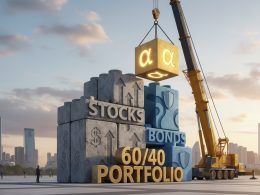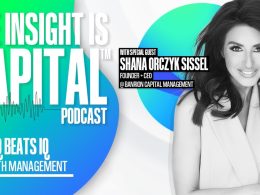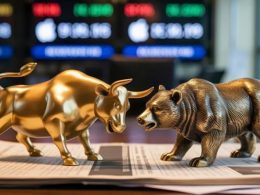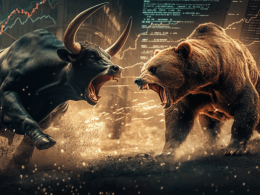by Cullen Roche, Pragmatic Capitalism
There’s a strong tendency in the financial markets to live in the extremes. That is, we often draw a line in the sand. You’re either bullish OR bearish. You’re in OR you’re out. You’re on this side OR that. But like most things in life, the best place to be is often somewhere in the middle. Living on the extremes results in extreme and oftentimes irrational outcomes.
I caused a bit of a stir on Twitter this afternoon when I said that there was $816 million left in the bull market. This was a snide reference to John Hussman’s assets in the Strategic Growth Fund. Hussman has been famously bearish for the last 6 years and the assets in the fund have quickly drained. In fact, his fund has negative 10 year returns. I hate to see this. I certainly don’t root for people to fail and I take no pleasure in pointing out the failure of the fund over the last decade. But the thing is, Hussman has fallen on the extremes over the last 6 years. He’s taken a strong directional bias against the S&P 500 and it’s obviously been a very bad decision. And so his situation actually makes for a good learning experience.
This really doesn’t have anything to do with Hussman though and I am sorry if this sounds personal – it certainly isn’t. It has to do with a much broader perspective that has persisted over the last 6 years. It’s the whole permabear perspective based on the idea that QE was going to lead to inflation and an irrational stock market rally. The problem is that this sort of thinking has resulted in a permanent bearish position that has been highly destructive. Thinking in this extreme sort of manner has actually hurt a lot of people.
I should be clear – it’s fine to be bearish at times. It’s fine to hedge. It’s fine to underperform the S&P 500. But when you take a permanent bearish directional bias on life and the markets then you’re betting against the most powerful trend in the macroeconomy – the fact that more humans wake up every day and say “I am going to be better than I was yesterday” than there are people who say “I am going to make this world a worse place than it was yesterday”. This is why permabears always look wrong in the long-run while permabulls only look wrong for relatively short periods of time. As I’ve noted before, the economy and the markets tend to be in an expansion phase about 80% of the time. Fighting that trend for sustained periods of time is not only irrational – it’s highly destructive. And if you fall into the short-term bearish trap you have to be willing to change your mind and understand when you’re wrong because this powerful long-term macro trend will very likely make you wrong at some point.
Of course, it’s equally irrational to be completely correlated to the S&P 500. After all, if you take my view, that your portfolio is literally comprised of your savings (it’s your savings portfolio), then your portfolio probably shouldn’t be correlated perfectly with a high growth high volatility index like the S&P 500. This means that some degree of hedging is totally appropriate. Yes, permabulls are only marginally more rational than permabears. The point is, you don’t want to be a permabear or a permabull. Don’t live on the extremes.
Copyright © Pragmatic Capitalism












